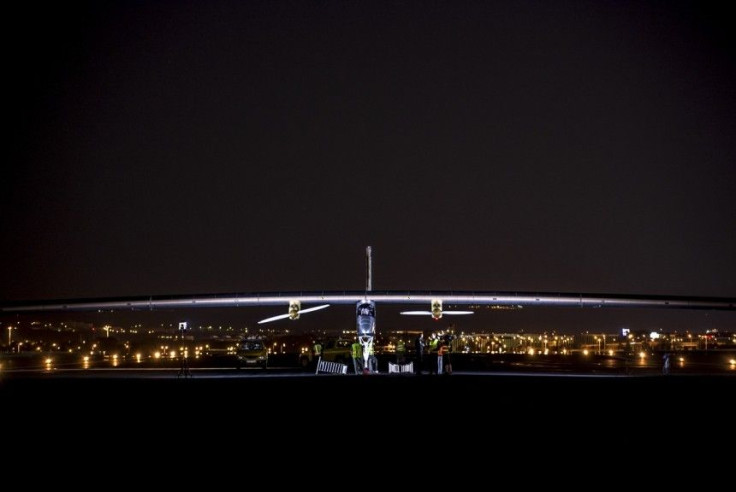
To pursue new levels in efficient transportation is to push the limits of energy, aerodynamics, weight, and range. What better way to explore these boundaries than to fly an experimental solar-powered plane?
USA Today reports that on Tuesday evening, pilot Bertrand Piccard returned the Solar Impulse aircraft back to earth, gliding gracefully onto the Moroccan runway with all four of its propellers still after a 20-hour transcontinental flight from Madrid. Piccard and the Solar Impulse made history: this is the very first transcontinental journey by an aircraft of its type.
Upon landing, Swiss pilot Bertrand Piccard appeared unfatigued. "It was perhaps the most beautiful flight of my life, I have dreamed since I was a child of flying without using fuel," Piccard exclaimed.
Weighing no more than an average family car, the tiny single-seat aircraft punches the smallest hole in the air possible for minimal wind resistance. However, Solar Impulse's party piece is its massive solar cell panel array that extends across the surface area of its wings. With an incredible wingspan comparable to that of an Airbus A340 airliner, the Solar Impulse boasts a total of 12,000 solar cells installed!
Performance-wise, the Solar Impulse is capable of an altitude of 28,000 feet, only a little lower than the cruising altitudes of airliners. Top speed is a very modest figure of just a little more than 75 mph while its cruising speed is an even less heroic 40 mph.
Observant readers might have noted that the Solar Impulse landed during the evening, arriving at the Morocco capital of Rabat. While landing in darkness seems peculiar for a solar aircraft, the Solar Impulse aircraft possesses a unique system that enables its solar panels to charge batteries in reserve for night operations. This is the first solar plane that could fly both day and night.
Addressing the choice of landing location, Piccard explained that the Solar Impulse Project wanted to involve the country of Morocco in this landmark event for admiration of Morocco's ambitious plan to increase its use of solar energy. "We came here out of admiration for Morocco's pioneering solar energy program," Bertrand Piccard explained. "All of the technology on this plane can be used in real life."
Benefiting from the strong sunlight over Africa, Morocco is set to begin construction of an enormous solar energy farm to help minimize its dependence on fossil fuels. The solar energy farm is expected to produce 2,000 megawatts of solar energy by 2020. If successful, Morocco also plans to eventually export the energy to Europe.
Despite its innovative design and its transcontinental achievement, the Solar Impulse is not without its flaws. Setting off from Switzerland in late May for its first leg of the journey, the delicate aircraft was forced to stay grounded due to multiple days of poor weather conditions. Eventually, the epic two-leg journey from Europe to Africa trip covered 1,554 miles.
After its successful voyage, Piccard and the Solar Impulse now have their eyes fixed on a new goal - circumnavigation of the globe. But first, the team of Solar Impulse engineers must understand and learn from the valuable information recorded during this journey and apply the knowledge for improvements on the aircraft before its scheduled to be ready again by 2014.
The Solar Impulse Project first began in 2003 and is estimated to have cost about $100 million over 10 years.
Check out the video of Bertrand Piccard's preperation and flight to Morocco in the Solar Impulse below:




